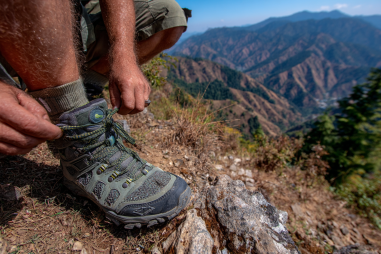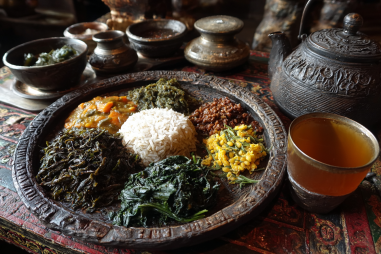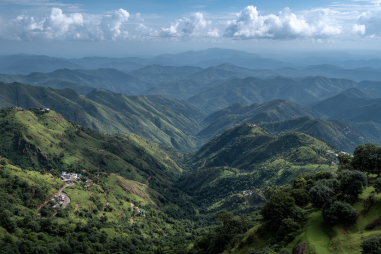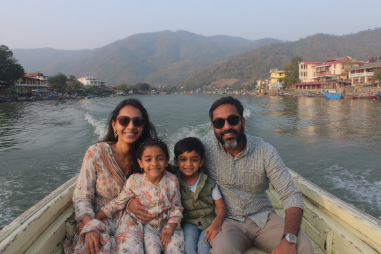Planning a trip to Bhaktapur? Knowing what kind of weather to expect and the best time to visit can make a huge difference in how much you enjoy this cultural gem. Bhaktapur, rich with history, stunning architecture, and vibrant festivals, experiences a range of weather conditions throughout the year. Understanding these patterns will help you decide when to pack your bags and what to bring along for a comfortable, memorable experience.
Overview of Bhaktapur Climate
Bhaktapur is located in the Kathmandu Valley of Nepal at an altitude of about 1,400 meters (4,600 feet). This elevation gives the city a temperate climate, characterized by moderate temperatures year-round. The weather is largely influenced by the monsoon season, which brings a distinct wet period, and distinct dry and cool winters. Summers tend to be warm but not overwhelmingly hot, while winters can be chilly, especially early in the morning and at night.
Generally, Bhaktapur enjoys four clearly defined seasons: spring, summer (monsoon), autumn, and winter, each with its own unique charm and activities.
Seasonal Weather Patterns
Spring (March to May)
Spring in Bhaktapur is delightful, with temperatures gradually rising from the mild chill of winter to comfortable warmth. Daytime temperatures typically range from 15°C to 25°C (59°F to 77°F). The skies are mostly clear, and the city blooms with colorful flowers. This season is perfect for sightseeing and exploring Bhaktapur’s historic squares without the crowds of peak tourist times.
Summer and Monsoon (June to August)
Summer coincides with the monsoon season, bringing heavy rainfall to Bhaktapur. Temperatures are warmer, usually between 20°C and 30°C (68°F to 86°F), but the rain can make it feel more humid. Although the monsoon showers often come in bursts, they enhance the lush greenery and make the city’s environment particularly vibrant. However, the rain can sometimes disrupt outdoor activities and make travel on unpaved roads challenging.
Autumn (September to November)
Autumn is considered one of the best times to visit Bhaktapur. The monsoon rains retreat, leaving the air fresh and the skies clear. Temperatures drop to a comfortable range of 16°C to 26°C (61°F to 79°F). The visibility of the Himalayas from Bhaktapur is spectacular during this season, attracting photographers and nature lovers alike. This time of year also hosts many cultural festivals, making it an ideal period to experience local traditions.
Winter (December to February)
Winters in Bhaktapur are cool and dry, with temperatures ranging between 2°C and 15°C (36°F to 59°F). Early mornings and nights can be quite chilly, often dipping near freezing, but daytime conditions are usually sunny and pleasant. If you don’t mind the cold, this season offers less crowded tourist spots and crisp, clear air perfect for sightseeing and photography.
Best Months for Travel
Choosing the right month to visit Bhaktapur depends on what kind of experience you want.
- September to November: This is arguably the best period to visit Bhaktapur. The weather is cool, dry, and clear, ideal for exploring outdoor sites and attending festivals like Dashain and Tihar.
- March to May: Spring also offers pleasant weather, ideal for outdoor activities and enjoying the blooming foliage across the city.
- December to February: Winter is great for travelers who prefer fewer crowds and can manage cooler temperatures, especially if you want to experience the city without the hustle and bustle.
- June to August: While monsoon season has its drawbacks with heavy rainfall, it’s a wonderful time for nature lovers and those seeking a quieter, more introspective visit.
What to Pack for Each Season
Packing smartly can enhance your comfort no matter when you visit. Here is a seasonal packing guide for Bhaktapur:
- Spring: Light layers such as long-sleeve shirts, a light jacket, comfortable walking shoes, and sunglasses. A hat and sunscreen are recommended.
- Summer (Monsoon): Waterproof jacket or poncho, quick-dry clothes, waterproof shoes, an umbrella, and insect repellent. Pack a waterproof cover for your backpack.
- Autumn: Layers remain important—light sweaters during the day and warmer scarves or jackets for the early morning and evenings. Don’t forget your camera!
- Winter: Warm clothes including thermal wear, a heavy jacket, gloves, a woolen hat, and scarves. Good quality walking boots or shoes with grip are ideal.
How Weather Affects Festivals and Activities
Bhaktapur’s festivals are deeply rooted in tradition and linked to the seasonal cycles. The clear and pleasant autumn months create the perfect backdrop for major celebrations like Dashain, the longest and most significant festival in Nepal, and Tihar, the festival of lights. These festivals bring the city to life with vibrant rituals, dance, and cultural performances.
Spring hosts Bisket Jatra, a lively and colorful festival that marks the Nepali new year and is best enjoyed in mild, dry weather. Meanwhile, during the monsoon, outdoor events are less frequent because of unpredictable rains, though the lush landscapes are at their most beautiful—a treat for nature lovers and photographers.
Winter’s cold may restrict lengthy outdoor activities but is a wonderful season for indoor cultural experiences, sampling Bhaktapur’s famous local cuisine, and visiting museums with fewer tourists around.
Travel Tips for Different Weather
- During the Monsoon: Plan indoor activities and carry waterproof gear. Be cautious of slippery surfaces and possible delays in transport.
- For the Cool Seasons: Dress in layers to adjust to temperature changes throughout the day and remember hydration is important even in cooler weather.
- Sun Protection: Regardless of the season, the sun can be strong. Sunscreen, hats, and sunglasses are always recommended.
- Accommodation: Some heritage houses in Bhaktapur are converted into guesthouses with heating facilities, an excellent choice in winter.
- Local Advice: Engage with locals to get tips on festival timings and weather-related travel adjustments, enhancing your experience.
Understanding Bhaktapur’s weather and timing your visit can transform an ordinary trip into an extraordinary journey. Whether you prefer the colorful festivities of autumn, the tranquil green summers, the refreshing springs, or the serene winters, Bhaktapur offers unique charms all year round. By planning ahead and packing accordingly, you’re guaranteed a comfortable and enriching exploration of this historic city.







